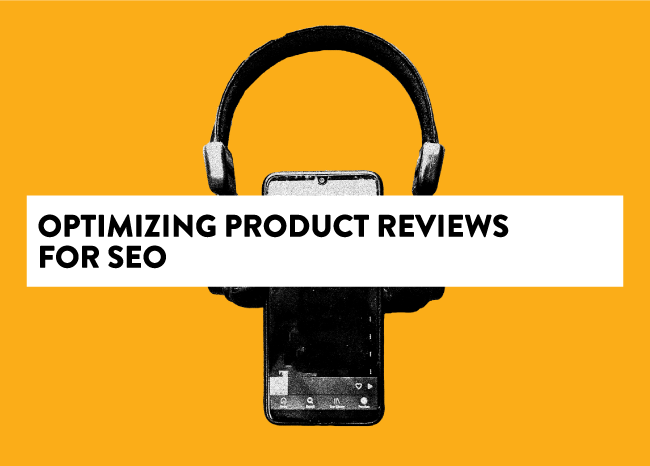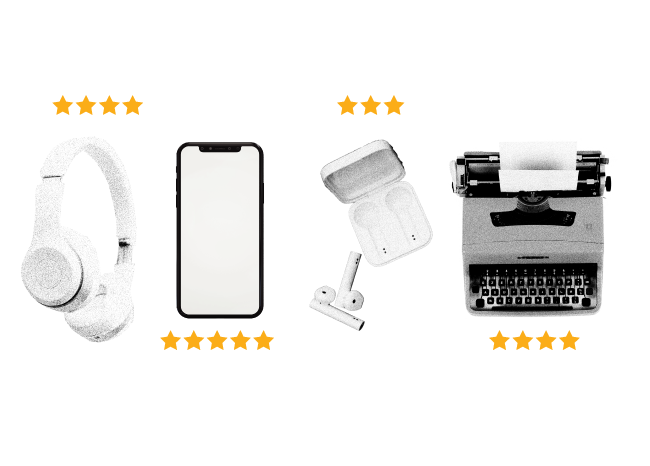Optimizing Product Reviews for SEO

Recent updates to the Google algorithms have concretized the search giant’s mission to reward “helpful, reliable, people-first content.” With one named unambiguously as the “helpful content update” in August 2022, Google has deliberately signaled its elevated standards for search results.
As part of this push favoring user-focused content, Google has also released a series of changes called the product review updates. These apply specifically to sites that review, compare, or promote products from a user’s perspective. If you produce this type of content — and you want to perform well in search — it’s important to understand these updates and how they inform the SEO best practices for product reviews.
The Impact of Google’s Product Review Updates

Google periodically makes updates to its algorithms that affect search rankings. Not all of these produce noticeable impacts for all types of websites, but a release in April 2021, titled the product reviews update, caught the attention of marketers because of its apparent specificity.
Although data showed only subtle effects at first, subsequent updates have produced bigger shifts in page rankings and future updates will likely bring more changes over time. Even if your product review rankings appear unaffected since the rollout, you may yet see its influence in the future, especially if you continue to produce this type of content.
Types of Content Considered Product Reviews

According to Google’s documentation for product reviews, the updates are designed to evaluate product reviews on a page-level basis and assess site-wide for domains that contain a high percentage of this kind of content. In short, any page that makes reviews or comparisons for shoppers may be impacted, including:
- Pages on commercial or non-commercial sites;
- “Best of” listicles or similar blog-style pages;
- Informational articles that suggest products or services;
- Any content that incorporates affiliate links.
Also important to note is what the product reviews update does not target, which includes product or service detail pages. These are the transactional pages that occupy the bottom of your marketing funnel, providing the most specific information and options to buy.
Google has a separate set of guidelines for product detail pages, emphasizing the uniqueness and verifiability of data on the page. Guidelines for product reviews, on the other hand, are more focused on the quality from a reader's perspective — that’s why following best practices for product reviews can help you not only win at search, but also win at satisfying your customers.
Best Practices for Product Reviews, According to Google

As a seller, blogger, or influencer who reviews or compares products, you already know that earning the trust of your audience is crucial. Google agrees, and the recent updates are focused on just that. The search engine wants to avoid unoriginal content and deceptive marketing by instead rewarding authentic information that helps readers decide for themselves, rather than just pushing to make a sale.
Demonstrate First-hand Expertise
A good review should evaluate a product from the user’s perspective, rather than simply describing attributes according to the seller. Not only that, a high-quality review should show knowledge from extensive experience and additional research. Here are some ways to demonstrate such expertise:
- Speak in the first person and from personal experience.
- Offer experiential insight beyond what the manufacturer’s description provides.
- Share specific measurements and data about how a product performs.
- Explain key choices in the design and the reasoning behind them, along with how these features perform in real-world testing.
- Share some history of the product like how it was developed, how it has improved over previous models, or how particular issues have been addressed.
Publish Original Writing and Media
As with any online content, it’s imperative that the words are your own, rather than copied or paraphrased from another source. If you have used the product first-hand, then coming up with genuine words to describe it should be no problem. In addition, you should publish original photos, videos, or other visual content showing how you’ve used the product.
You can even take it a step further with some creativity. Try to go beyond simply sharing information and use your words and images to tell the story of how you’ve used the product or how it was made. Storytelling is, after all, one of the most powerful tools for marketing, helping to humanize your brand and connect more personally with your audience.
Discuss Pros as Well as Cons
For marketers, the reality of pros and cons can feel like a difficult hurdle to surmount. When your ultimate goal is to make a sale, it’s tempting to tout only advantages and ignore all the shortcomings. However, people can generally see through this strategy, and now search engines can, too.
The good news is that addressing downsides in the right way can boost your credibility with shoppers and make them more likely to buy at your recommendation. Here are some strategies for doing that:
- Explain key decision-making factors and why certain design choices were made — such as trade-offs favoring performance in one category over another.
- Be honest about advantages and disadvantages under certain circumstances compared to others.
- A product may have downsides but remain a top choice in its class. If this is the case, try to be specific in explaining why.
Address the Competition
A lot of marketers abide by the old sales rule that says, “never talk about the competition.” While it’s true that you shouldn’t talk badly about your competitors (spreading negativity makes you look bad as well), it is still okay to name other options and speak respectfully about how your product compares.
Doing so will help build trust with your audience by proving that you aren’t trying to mask or ignore the competition, but instead, you embrace the challenge of offering a better product. Even if you choose not to mention competitors by name, you should at least acknowledge that there are alternatives and describe as specifically as possible what sets your choice apart.
- Don’t shy away from naming competitors and describing what they offer, if doing so makes sense for your brand.
- Discuss other options that a buyer might consider and explain their pros and cons compared to the product in question.
- If a product has some downsides, but remains the best value in its class, explain why by making specific comparisons.
- If you claim that a product is the “best” value or the best in its class, be sure to explain why with specific comparisons.
- Consider providing links to alternative products, other reviews, or multiple sellers to prove your commitment to authenticity and respecting the consumer’s choice.
How Product Reviews Fit Into Your SEO Strategy

All of these best practices are geared toward creating product review pages that stand out, but that should be just one component of your overall strategy for SEO. The question remains of how to integrate your optimized review pages with the rest of your site’s content. Here are some tips.
E-A-T Guidelines
From a zoomed-out perspective on SEO strategy, it becomes clear that the best practices for product reviews align neatly with the general guidelines of E-A-T for SEO. Short for Expertise, Authoritativeness, and Trustworthiness, the E-A-T framework is a way of evaluating content quality across your domain.
- Expertise is the ability to explain a topic comprehensively and draw connections within a broader context. This means demonstrating thorough knowledge of not just the products, but competitors and the overall industry as well.
- Authoritativeness is the accuracy and verifiability of your information. This can be shown by citing your sources, quoting other experts, and referencing related information on your own site.
- Trustworthiness is the dependability of your claims as well as your business practices. Following all of the above guidelines will help build trust with customers, but you should think about other aspects of your site — like feedback forms, contact information, and privacy policies, as well as organic backlinks — that can promote trust as well.
Keywords in Product Reviews
Whether you are an affiliate or a seller, product reviews could be some of the most valuable keyword-focused content on your website. Research shows that 9 out of 10 customers read reviews before buying, and a great number of them use Google specifically to find reviews. If you can target the keywords that your audience is using while upholding quality content according to best practices, you could potentially gain a lot of traffic from organic search.
Some of the top keywords will be obvious and natural to incorporate in your reviews, such as brand names and product categories. However, these are likely to be the most competitive queries as well. In addition to including these top terms, you should conduct keyword research to find more specific queries — such as alternate product names, regional or local keywords, and long-tail keywords.
By finding the most relevant keywords and incorporating them smoothly into your product reviews, you can help your pages stand out in search results and reach a more qualified audience for your content.
Internal and External Links
Links should be a key focus of your SEO strategy. This is especially true for product reviews, which likely rely on links to product pages to ultimately make a sale. However, converting pages should not be the only links within your reviews.
Links to external sources can help elevate the E-A-T value of your domain. Internal links help with this as well, and have the additional benefit of sharing more of your content. In your product reviews, consider contextualizing links to any of the following:
- Reputable sources that back up the claims and facts that you present;
- Relevant pages on your own site (blogs, galleries, other reviews, etc.);
- External resources for more information beyond what your site provides
- Competing options for products, brands, or sellers — although not required, linking to alternatives can go a long way to prove your authenticity — decide whether or not this approach makes sense for your site.
Finally, it’s important to understand how Google views the links in your product reviews, especially if you use affiliate or sponsorship programs. According to the web developer guidelines, you should qualify any affiliate or paid links with the rel="sponsored" tag. This is crucial to avoid penalties under Google’s link spam policy.
The purpose of the spam policies is no different than that of the product review updates. Google intends to promote transparency — both to search engine algorithms and real site visitors. It’s an overarching theme of SEO, affecting not just product reviews but all of the content on your site.
Ultimately, Google just wants to reward the same thing that real people are looking for: genuinely helpful information that allows consumers to decide for themselves.

